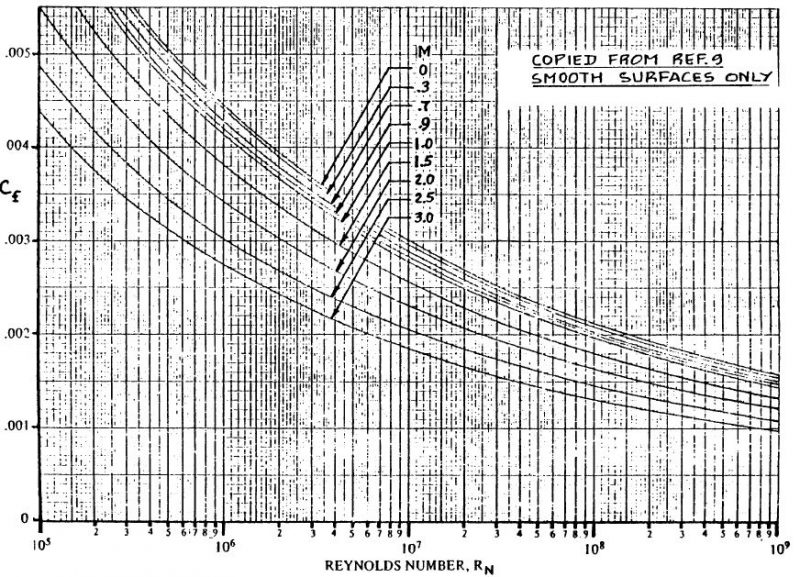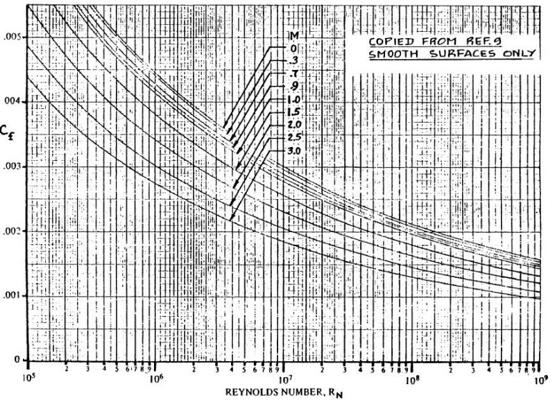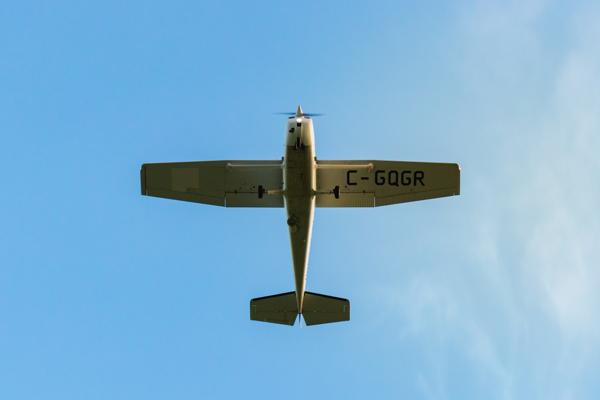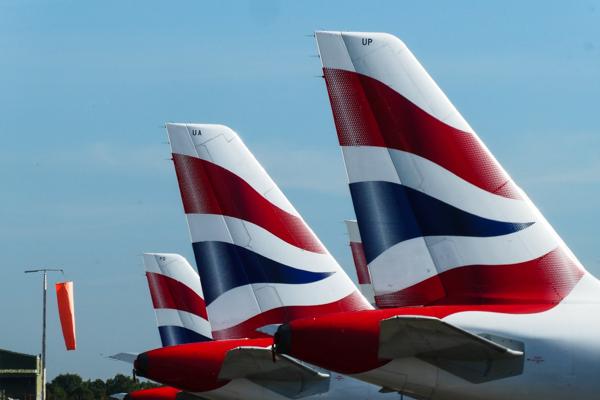The variation in turbulent flat plate skin friction coefficient with Reynolds number is calculated below. This is used when compiling an estimation of aircraft parasitic drag as described in the tutorial on the Drag Polar. The skin friction is graph originally published in USAF Stability and Control Datcom [1] and reproduced in Roskam Part VI Chapter 4.2 [2]. The calculator provides an estimation of the skin-friction coefficient based on a curve fit; the methodology is described below the graph.
The Reynolds number input can be determined using the AeroToolbox Reynolds Number Calculator.

Calculation Methodology
The skin friction coefficient calculator makes use of a power curve fit for each of the Mach numbers shown on the graph. The resulting \( C_{f} \) my therefore differ slightly from the value obtained directly from the graph. It is left to the user to determine whether the curve fit is appropriately accurate for use.
A curve fit is determined at each Mach number in the form:
$$y = A {x}^{B} \Rightarrow C_{f} = A \cdot {R_{e}}^{B} $$
\( A \) and \( B \) are given the values shown in the table below. The \( R^{2} \) term is published to give the user an indication of the quality of the curve fit.
| Mach | A | B | R 2 |
|---|---|---|---|
| 0.0 | 0.0391 | -0.157 | 0.9967 |
| 0.3 | 0.0399 | -0.159 | 0.9976 |
| 0.7 | 0.0392 | -0.16 | 0.9971 |
| 0.9 | 0.0376 | -0.159 | 0.9965 |
| 1.0 | 0.0381 | -0.161 | 0.9970 |
| 1.5 | 0.0371 | -0.164 | 0.9966 |
| 2.0 | 0.0329 | -0.162 | 0.9941 |
| 2.5 | 0.0286 | -0.161 | 0.9944 |
| 3.0 | 0.0261 | -0.161 | 0.9936 |
[1] Hoak, D.E, et al, USAF Stability and Control Datcom, Flight Control Division, Air Force Flight Dynamics Laboratory, WPAFB, Ohio, 45433-0000, 1978, (approved for public release). Link to document.
[2] Roskam, J, Airplane Design Part VI: Preliminary Calculation of Aerodynamic, Thrust and Power Characteristics, Roskam Aviation and Engineering Corporation, 1987.






